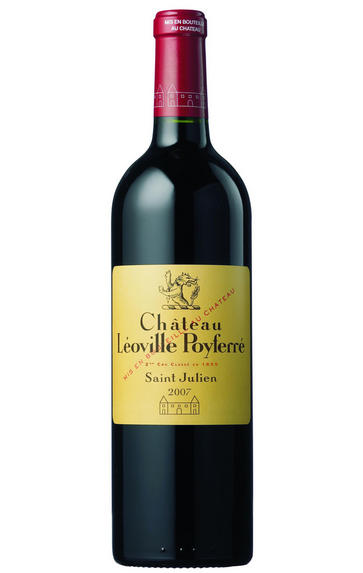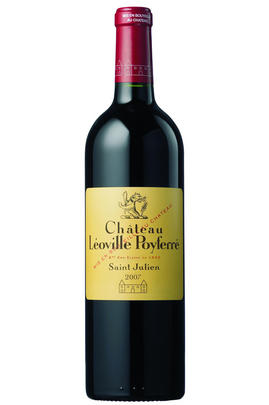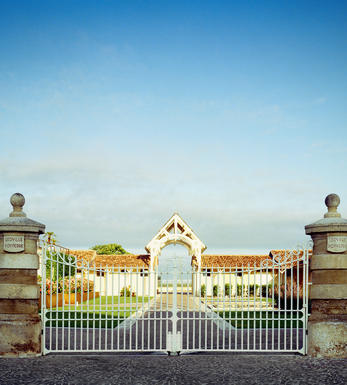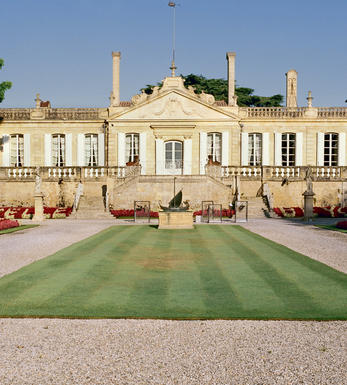
2016 Château Léoville Poyferré, St Julien, Bordeaux

Critics reviews
The 2016 Léoville-Poyferré has a pH of 3.66 and an IPT level of 88. It seems to have tightened up since en primeur, now offering intense blackberry, bilberry and veins of blue fruit; there’s a little gloss here but the terroir comes through. The smooth, sensual palate is medium-bodied with ripe tannin, very well-judged acidity and great substance and style on the finish. Undoubtedly, this is one of the most sophisticated Poyferré in recent years. 13.6% alcohol. Drink 2023-2048.
Neal Martin, vinous.com (Jan 2019)
This is always a big, dramatic wine which does well in big vintages. Right through the palate you feel the beautiful architecture, and the beauty of 2016 means that the final impression is of a sophisticated but supremely balanced wine with a modern construction. Damsons and bilberries abound, with clear tension where the skin of the wine is pulled tightly over the drum. It is less of a 'classical' St-Julien than some this year, but it is entirely of itself, and excellent. The blend is 60% Cabernet Sauvignon, 33% Merlot, 5% Petit Verdot and 2% Cabernet Franc, with a full 55% of the overall production making it into the grand vin, which has 3.66pH. Michel Rolland has been consultant for many years, working closely alongside owner Didier Cuvelier. Drinking Window 2027 - 2050.
Jane Anson, Decanter.com (April 2017)
Tasted blind. Lighter than some with admirable freshness. Crackling texture and real lift. Long. Very well put together. Not to be underestimated even if it’s not flashy. Drink 2026 – 2050
Jancis Robinson MW, JancisRobinson.com (Feb 2020)
Wow. The power and depth to this wine is super with a full and fleshy palate, yet so tight and integrated with panache and energy. Chewy tannins yet seamless and melted in the wine. Extremely long and beautiful. This needs at least five to six years to resolve the steely tannins that run through this wine. Take a look from 2024. A blend of 61 per cent cabernet sauvignon, 27 per cent merlot, eight per cent merlot and four per cent cabernet franc.
James Suckling, jamessuckling.com (Feb 2019)
More than half of the production went into the Grand Vin in 2016, and the quality of the wine more than justifies it. Lively, perky and refreshing, it’s the best Léoville-Poyferré since 2010, with plenty of structure, granular tannins, smoky oak and a core of crunch, dark berry fruit. Drink 2026-36.
Tim Atkin MW, timatkin.com (April 2017)
Tasted on four separate occasions where this wine rated 97+, 98, 98, and 99, the 2016 Château Léoville-Poyferré is a brilliant bottle of wine and is certainly in the same league as the 2000, 2003, 2009, and 2010. Made from 62% Cabernet Sauvignon, 26% Merlot, and the balance Petit Verdot and Cabernet Franc, aged in 80% new oak, this brilliantly concentrated, full-bodied, opulent beast of a wine offers a heavenly bouquet of crème de cassis, blackcurrants, smoked earth, tobacco leaf, and ample crushed rocks. It’s certainly one of the most flamboyant and opulent wines in the vintage, yet it remains perfectly balanced, with masses of polished tannins, no hard edges, and a fabulous finish. It will be drinkable in 3-4 years yet keep for 3-4 decades. Drink 2022-2062.
Jeb Dunnuck, jebdunnuck.com (March 2019)
About this WINE

Château Léoville Poyferré
Château Léoville Poyferré is a wine estate in St Julien on the Left Bank of Bordeaux. It was once part a larger estate called Léoville, which was established in 1638 and divided up centuries later following the death of its owner. That original estate gave rise to the three separate properties now called Léoville Barton, Léoville Las Cases and Léoville Poyferré. The latter took its name in 1840 from Baron Jean-Marie de Poyferré, who inherited the estate along with his wife, the daughter of Jeanne de Las Cases. Léoville Poyferré, like Barton and Las Cases, was ranked a Second Growth in the 1855 classification.
The estate has been owned and run since 1920 by the Cuvelier family. Having established themselves as wine merchants in Lille in Northern France, the family had recently bought Château Le Crock in St Estèphe before expanding into St Julien with both Léoville Poyferré and Château Moulin Riche. The family firm is led today by Sara Lecompte Cuvelier, who took over from her uncle Didier Cuvelier in 2017. She works with long-time winemaker Isabelle Davin. Michel Rolland has been the consultant here since the mid-1990s.
The portfolio here includes the grand vin, Château Léoville Poyferré, along with the estate’s second wine, Pavillon de Léoville Poyferré. Moulin Riche was once considered an unofficial second wine of Léoville Poyferré but has since 2009 been very much its own estate wine.

St Julien
St Julien is the smallest of the "Big Four" Médoc communes. Although, without any First Growths, St Julien is recognised to be the most consistent of the main communes, with several châteaux turning out impressive wines year after year.
St Julien itself is much more of a village than Pauillac and almost all of the notable properties lie to its south. Its most northerly château is Ch. Léoville Las Cases (whose vineyards actually adjoin those of Latour in Pauillac) but, further south, suitable vineyard land gives way to arable farming and livestock until the Margaux appellation is reached.
The soil is gravelly and finer than that of Pauillac, and without the iron content which gives Pauillac its stature. The homogeneous soils in the vineyards (which extend over a relatively small area of just over 700 hectares) give the commune a unified character.
The wines can be assessed as much by texture as flavour, and there is a sleek, wholesome character to the best. Elegance, harmony and perfect balance and weight, with hints of cassis and cedar, are what epitomise classic St Julien wines. At their very best they combine Margaux’s elegance and refinement with Pauillac’s power and substance.
Ch. Léoville Las Cases produces arguably the most sought-after St Julien, and in any reassessment of the 1855 Classification it would almost certainly warrant being elevated to First Growth status.
Recommended Châteaux: Ch. Léoville Las Cases, Ch.Léoville Barton, Ch Léoville Poyferré, Ch. Ducru-Beaucaillou, Ch Langoa Barton, Ch Gruaud Larose, Ch. Branaire-Ducru, Ch. Beychevelle

Cabernet Sauvignon Blend
Cabernet Sauvignon lends itself particularly well in blends with Merlot. This is actually the archetypal Bordeaux blend, though in different proportions in the sub-regions and sometimes topped up with Cabernet Franc, Malbec, and Petit Verdot.
In the Médoc and Graves the percentage of Cabernet Sauvignon in the blend can range from 95% (Mouton-Rothschild) to as low as 40%. It is particularly suited to the dry, warm, free- draining, gravel-rich soils and is responsible for the redolent cassis characteristics as well as the depth of colour, tannic structure and pronounced acidity of Médoc wines. However 100% Cabernet Sauvignon wines can be slightly hollow-tasting in the middle palate and Merlot with its generous, fleshy fruit flavours acts as a perfect foil by filling in this cavity.
In St-Emilion and Pomerol, the blends are Merlot dominated as Cabernet Sauvignon can struggle to ripen there - when it is included, it adds structure and body to the wine. Sassicaia is the most famous Bordeaux blend in Italy and has spawned many imitations, whereby the blend is now firmly established in the New World and particularly in California and Australia.


Buying options
Add to wishlist
Description
Dark purple, the nose has a pleasing restraint and there is a little hint of blackcurrant, cedar and dried tobacco. The palate is well structured with fine, integrated tannins. There is a cool, fresh sensation with tremendous energy and lift. A lovely swathe of blackcurrant and cream envelopes the palate. It finishes long, rich and bright.
Blend: Cabernet Sauvignon 60%, Merlot 33%, Petit Verdot 5%, Cabernet Franc 2%
wine at a glance
Delivery and quality guarantee